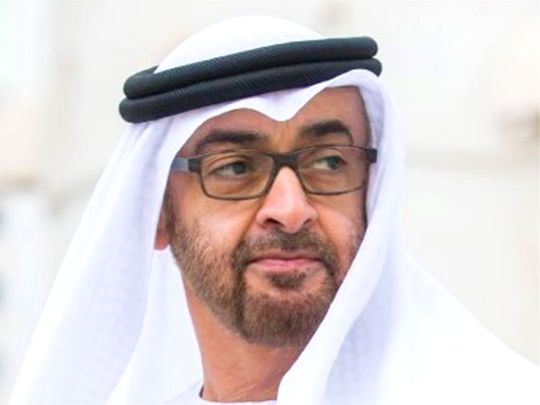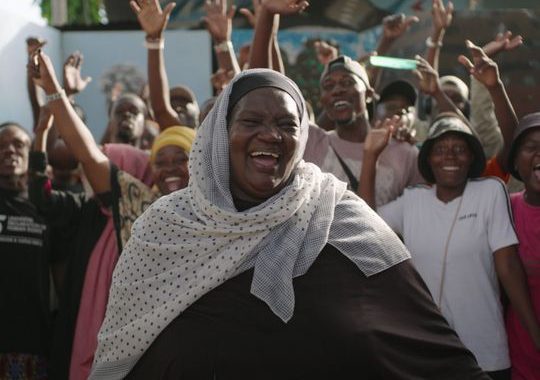Why top designers are knocking on the past in Dubai

Image Credit: Supplied
Dubai: Dubai is all set to host Dubai Design Week at Dubai Design District (D3) from tomorrow, November 7 to 12. A key feature of this year’s programme will be large-scale outdoor installations with a focus on how design, science and technology can converge to reclaim materials of the past. According to the organisers, it will also reimagine new forms that foster sustainable practices with immersive public interventions made from materials such as palm leaves, loofah, sugar and paper pulp, with 3-D printed architecture at the forefront.
The event, to be held under the patronage of Sheikha Latifa bint Mohammed bin Rashid Al Maktoum, Chairperson of Dubai Culture & Arts Authority (Dubai Culture) and member of the Dubai Council, in strategic partnership with Dubai Design District, a member of TECOM Group, has a lot on offer. Those behind some key installations tell Gulf News what their defining concepts are about and what the takeaways from their displays around d3 are.
Why the ‘Hadeera’ is still relevant today
Architects Wael Al Awar and Kazuma Yamao of the Dubai- and Tokyo- based studio waiwai, who will present Urban Hadeera, say the Hadeera is one of the most recognisable structures from the vernacular architecture of the UAE. This prototype shows that the structure is just as relevant for our cities today as it has always been for rural contexts.

Image Credit: Supplied
The artists say, “We developed the Urban Hadeera to show how traditional architecture from the UAE can be adapted for cities today. The Hadeera is an open structure designed to provide shelter against the wind and sand, and to protect the fires that are lit in the desert at night. This version is made with sustainable, salt-based building materials. Traditions don’t have to stay in the past; they are living things that can provide solutions for urgent problems like the climate crisis. We hope that visitors to Dubai Design Week will come away with an idea of how revisiting time-tested approaches to designing and building can refresh our view of the way we live now.”
‘Flowing Threads’ and Dubai’s identity
Areen Hassan is a Palestinian artist and designer based in Dubai. Her work engages with Islamic art as a living art that endlessly sculpts daily life. Her aim is to go beyond the visual perception of Islamic art to investigate an embodied participatory language through which it is represented.

Image Credit: Supplied
Her work at d3, ‘Flowing Threads’, is an expansive installation embodying symbolism using textiles. Unravelling threads reshapes the fabric, capturing transparency, flexibility, and functionality. This meticulous hand technique reveals layers, emphasising design functionality while preserving thread and colour distinctiveness. The threads that make up the installation follow the flow of the wind, emphasising material lightness, contrasting with the fabric’s colour/transparency with surroundings’ mineral quality creates reflective gradations, making the pavilion dynamically change throughout the day.
She says, “Flowing Threads is my first urban installation that will be displayed during d3, it’s a dialogue between handmade textile and the surrounding buildings, making it a dynamic creation reflecting Dubai’s identity.”
Time for a ‘Reality Check’
Kapil Bhimekar, Creative Director at Leo Burnett Mena, answers many questions about reality through his works. The things that have always defined reality – physical touch, in-person interaction, perceptible connections – are increasingly being offered through ‘hyper-real’ simulations that, despite all their capabilities, fall painfully short of the purity and truth in tangible, human-to-human moments.

Image Credit: Supplied
He says, “In a world where reality is virtual and intelligence is artificial, the boundaries between what is defined as reality and what is truly real, are blurring. ‘Reality Check’ is a supersize, inflatable installation that attempts to answer that ambiguity, by inviting people to play, interact, enjoy, connect with each other, and be reminded that nothing can beat the authenticity of physical human experiences.”
Repurposing waste through ‘Pulp Fractions’
Tarlan Vaziri Farahani, Founder and Architect at TeeVeeEff, and Rima Chalha, Lead Interior designer at TeeVeeEff, are presenting ‘Pulp Fractions’ at d3. According to them, “In this day and age, architectural materials being ‘biodegradable’ in the name of sustainability aren’t enough to keep the waste out of our landfills. We need to repurpose our discarded materials.”

Image Credit: Supplied
As such, Pulp Fractions, with the help of Union Paper Mills, seeks to salvage the situation. The idea is to repurpose discarded paper and cardboard packaging which have been used at an exponential rate due to the increase in delivery and consumerism. These items will be collected from end users discarding them as well as recycling facilities which hold them in landfills. The material is made into a liquid slurry or ‘pulp’ and is then cast, pressed, dried and trimmed into volumes. The shapes of these units or ‘fractions’ allow them to be stackable and thus form a structure which can be arranged infinitely to serve any function.


